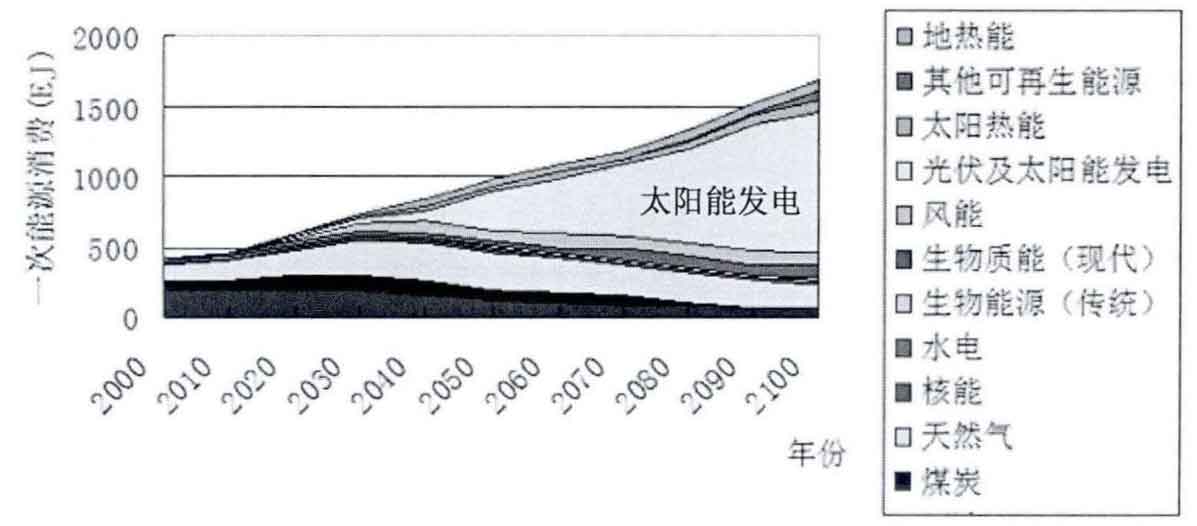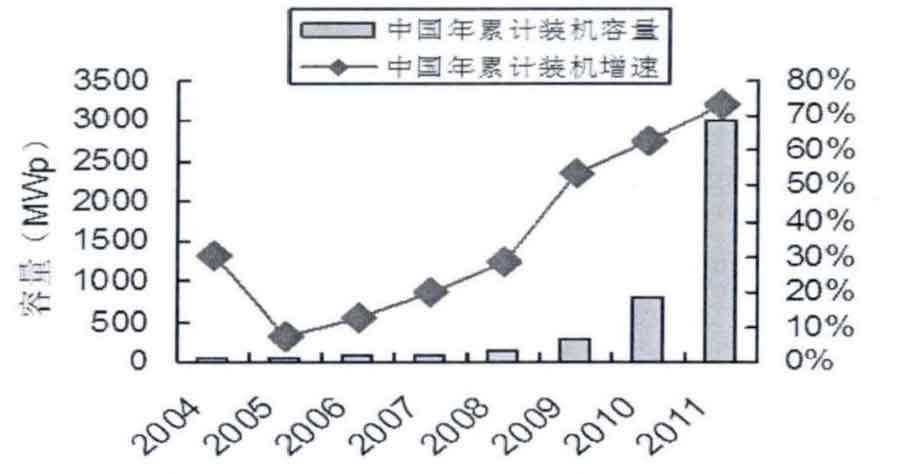With the development and utilization of new energy, solar photovoltaic power generation is receiving increasing attention. With the strong support of governments around the world, solar photovoltaic power generation has achieved rapid development.
In order to fully utilize solar photovoltaic technology, the application of solar photovoltaic power generation technology is the most basic path, and solar photovoltaic power generation systems have no mechanical rotating components, simple maintenance, and many advantages that other power generation methods cannot match. After 1990, solar photovoltaic power generation technology has developed rapidly. From Figure 1, it can be seen that from 2020, solar photovoltaic will become the main source of energy for humanity, and subsequently, the share of solar photovoltaic power generation will continue to increase. In the long-term resource utilization, solar photovoltaic power generation will play a crucial role. In the coming decades, new energy sources such as solar photovoltaic technology will definitely face a period of rapid progress, so the development of solar photovoltaic power generation cores has a profound impact.

Currently, many countries around the world have developed sustainable development strategies for solar photovoltaic power generation. Now, the United States has implemented the Million Solar Roof Plan, and the Scottish government has also issued a new solar photovoltaic power generation plan, which provides free installation of solar photovoltaic power devices on the roof for residents. Of course, the exchange condition is that this photovoltaic system must be retained on the roof of this household for at least 25 years, Residents are also allowed to use the electricity they generate for free; Nowadays, the production and scale of solar photovoltaic cells in Japan are also increasing, surpassing that of the United States; Even India has issued national solar energy plans and so on.
According to international authoritative institutions, it is expected that by 2030, the proportion of renewable energy will exceed 31% of total energy, and the production capacity of photovoltaic solar energy will also exceed 10%; It is expected that after the 1940s, the proportion of solar energy will exceed 50% of the total energy, and the proportion of photovoltaic solar energy production capacity will even reach over 20%; This fully demonstrates the crucial role that photovoltaic solar energy production capacity plays in the overall energy strategy deployment. Nowadays, photovoltaic solar power generation systems and the solar photovoltaic industry have become the focus of developing new energy in various countries. Due to their rapid development and promising market prospects, they will become one of the most promising industries in the entire power industry.
China has a large land area, abundant resources, and abundant solar photovoltaic resources. Nearly two-thirds of the land area will have solar photovoltaic radiation exceeding 3350MJ/m ^ 2 last year, which is much superior to countries such as Europe and Japan, and has huge development potential. In addition, desertification in China is quite severe and is showing an increasing trend year by year. Assuming that we allocate 1% of these desert areas to the construction of solar photovoltaic power generation systems, with an installed capacity of approximately 1 billion kilowatt hours, it will have a significant alleviating effect on the increasingly serious problem of insufficient power supply and demand.

However, compared with developed countries, the development of China’s solar photovoltaic power generation system is still relatively slow. The expensive prices of battery modules and power generation costs constrain the large-scale application of solar photovoltaic power generation systems, and some key technical issues still need to be solved urgently. In recent years, with the continuous improvement of China’s energy system and the introduction of various government incentive policies, as well as the increasing maturity of solar photovoltaic module grid connection technology, production capacity costs have been continuously decreasing, and solar photovoltaic power generation is facing a new era of rapid development. The policy of free installation, debugging, maintenance, and access for distributed solar photovoltaic power generation systems introduced by State Grid in 2013, and the construction of centralized large-scale solar photovoltaic power stations has also been listed as one of the key developments in China’s national energy development plan from 2010 to 2020, promoting its accelerated development.
